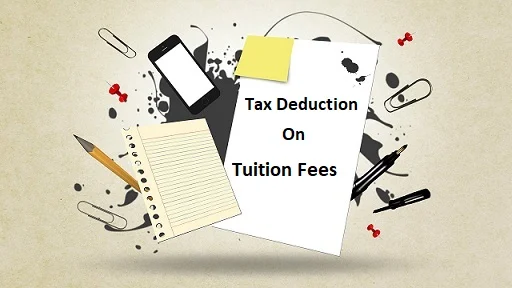Children’s education and tuition fee deductions in India, governed by the Income Tax Act, 1961, offer tax relief to parents investing in their children’s education. Hence, these deductions are a key tax-saving tool. How can you claim these benefits, and what are the compliance steps? Let’s break it down.
What Qualifies for the Tuition Fee Deduction?
Under Section 80C of the Income Tax Act, tuition fees paid towards your child’s full-time education in India qualify for deductions. However, there are some key points to note:
- Only tuition fees are eligible. Other charges like development fees, donations, or transport are excluded.
- The deduction applies to a maximum of two children per individual. If both parents are taxpayers, they can each claim for two children.
- It covers expenses from nursery to higher education, as long as it’s full-time and within India.
For example, if you’re paying ₹60,000 annually per child for tuition at a recognized school, you can claim the full amount under your ₹1.5 lakh Section 80C limit (including other investments like PPF, ELSS, etc.).
Who Can Claim This Deduction?
You must be a parent or legal guardian paying for your child’s tuition. The claim must be:
- Made in the same year the fee is paid
- For a biological or legally adopted child
- Paid to an Indian educational institution (private or government, but not foreign universities)
Salaried individuals often overlook this benefit when submitting proofs. Ensure your employer includes tuition fee receipts in your tax-saving documents. In addition, you cannot claim this benefit for yourself or your spouse’s education, only for children. For joint families, deductions are available individually for each parent as long as the payment is made from their taxable income.
How to Claim Tuition Fee Deduction Effectively:
To maximize the children’s education tuition fee deduction:
- Collect the fee receipts from the school every year.
- Submit these to your employer for TDS adjustments or claim while filing your ITR.
- Ensure the name on the receipt matches the parent claiming the deduction.
- Include it while calculating your total 80C investments.
You can also combine this deduction with other 80C instruments like ELSS or EPF to reach the ₹1.5 lakh limit.
What About Higher Education Loans?
Apart from claiming deductions on children’s education & tuition fee, you can also benefit from Section 80E if you take an education loan. This deduction applies to the interest paid on loans taken for higher education in India or abroad. There is no upper limit under Section 80E, and the deduction can be claimed for up to 8 years. This is especially useful for parents or students funding college or postgraduate studies.
Common Mistakes to Avoid:
While claiming the deduction is easy, several parents miss out due to simple errors:
- Including donation or development fees – These are not deductible.
- Claiming for more than two children – Only two are allowed per taxpayer.
- Not retaining proof of payment – Always keep receipts.
In addition, ensure the institution is recognized in India. International schools outside India don’t qualify, even if they follow an Indian curriculum. Learn more about official income tax guidelines at the Income Tax Department of India.
Conclusion:
The children’s education tuition fee deduction can help Indian parents save significantly on taxes while securing their child’s future. With rising education costs, every rupee saved matters. Make sure you understand the eligibility, maintain receipts, and plan your 80C investments smartly. Ready to maximize your education tax benefits? Explore more tax insights now!
– Ketaki Dandekar (Team Arthology)
Raed more about Children’s Education and Tuition Fee Deduction here – https://cleartax.in/tuition-fees
